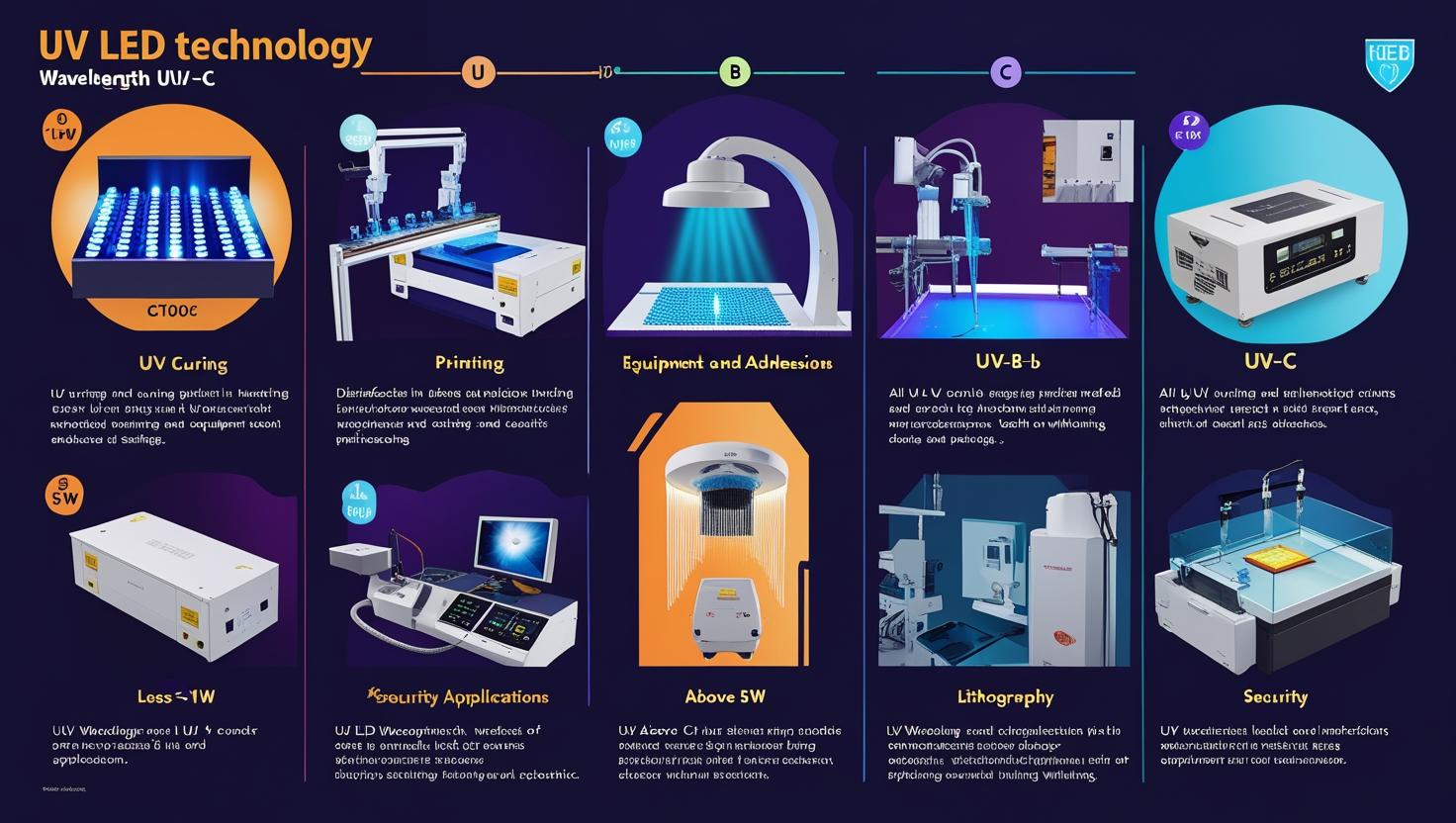The UV LED market is rapidly emerging as one of the most dynamic and impactful sectors within the broader lighting and semiconductor industries. Thanks to significant advances in ultraviolet (UV) light-emitting diode (LED) technology, UV LEDs are not only transforming traditional applications such as sterilization and water treatment but also opening new frontiers in healthcare, agriculture, electronics, and beyond. This surge in innovation is driving robust market growth and reshaping how industries approach efficiency, sustainability, and safety.
The UV LED industry is expected to be valued at USD 1.23 billion in 2025 and is projected to reach USD 2.16 billion by 2030, registering a CAGR of 11.9% during the forecast period. The main factors contributing to the growth of the UV LED market are the increasing demand for energy-efficient, compact, and mercury-free lighting solutions across industrial, healthcare, and consumer applications. Due to heightened hygiene awareness, UV LEDs are widely adopted for disinfection, purification, and sterilization. These systems address environmental and safety concerns by replacing traditional mercury-based lamps and offering a longer lifespan and lower power consumption. Moreover, the global push toward sustainability and stricter environmental regulations encourages industries to adopt UV LED technologies, as they support safer, cleaner, and more eco-friendly operations.
Understanding UV LEDs and Their Unique Advantages
UV LEDs emit ultraviolet light in specific wavelengths—typically UVA, UVB, or UVC—each with unique properties and applications. Compared to conventional UV lamps like mercury vapor lamps, UV LEDs offer several distinct advantages: they are more energy-efficient, have longer lifespans, provide instant on/off capabilities, are mercury-free (environmentally friendly), and are more compact and robust.
These advantages are catalyzing a shift from traditional UV sources to LED-based solutions across multiple sectors, fueling widespread adoption and accelerating market expansion.
Revolutionizing Sterilization and Disinfection
One of the most well-established applications of UV LEDs is in sterilization and disinfection. UVC LEDs, which emit short-wavelength UV light, are highly effective at destroying bacteria, viruses, and other pathogens by damaging their DNA or RNA. This makes them invaluable in healthcare settings, air and water purification systems, and food safety.
The COVID-19 pandemic highlighted the critical need for rapid, reliable disinfection technologies, boosting demand for UV LED-based sterilizers and surface cleaners. Unlike traditional UV lamps, UV LEDs can be integrated into portable devices and HVAC systems, enabling continuous, energy-efficient disinfection in real-time.
Download PDF Brochure https://www.marketsandmarkets.com/pdfdownloadNew.asp?id=143107738

Driving Innovation in Water Treatment
Water treatment is another major driver of UV LED adoption. Traditional water purification often relies on bulky mercury lamps, which are energy-intensive and environmentally hazardous. UV LEDs provide a compact, sustainable alternative, capable of treating drinking water, wastewater, and industrial effluents.
With increasing global focus on clean water access and regulatory pressures, industries and municipalities are investing heavily in UV LED systems. These systems offer better control, scalability, and lower operating costs, helping address the global water crisis while fostering market growth.
Expanding Horizons in Healthcare and Biotechnology
Beyond disinfection, UV LEDs are revolutionizing medical diagnostics, phototherapy, and biotechnology. Their precise wavelength control enables applications such as DNA sequencing, fluorescent imaging, and targeted UV phototherapy for skin conditions.
Moreover, UV LEDs are being integrated into lab-on-chip devices and biosensors, facilitating rapid and portable diagnostic tools. As personalized medicine and point-of-care testing expand, UV LED technologies are becoming indispensable enablers of innovation and improved patient outcomes.
Enhancing Agriculture and Food Safety
UV LEDs also have promising applications in agriculture and food safety. They can promote plant growth by simulating sunlight spectra, control pests without chemicals, and extend shelf life through surface sterilization.
Innovative growers are leveraging UV LEDs in controlled environment agriculture (CEA) and vertical farming to optimize yields and reduce environmental impact. At the same time, food processors use UV LEDs to ensure microbial safety without compromising quality, driving demand in the food production value chain.
Challenges and Future Outlook
While the UV LED market is poised for robust growth, challenges remain. The initial cost of UV LED systems can be higher than traditional UV lamps, though this is offset by operational savings over time. Efficiency, especially in the UVC range, is improving but still lags behind visible LEDs, prompting ongoing R&D efforts.
Standardization, regulatory approvals, and public awareness are other critical factors influencing market adoption. However, with escalating environmental concerns and the push for sustainable technologies, UV LEDs are well positioned to capture increasing market share.
Conclusion: A Bright Future Ahead
The transformative impact of UV LEDs across industries is undeniable. By offering safer, cleaner, and more efficient alternatives to traditional UV sources, they are accelerating innovation, enhancing public health, and promoting sustainability.
As technological advances continue and applications diversify, the UV LED market is set for impressive growth. For businesses and investors, this represents a compelling opportunity to engage with a technology that is literally illuminating the future.
FAQ
1. What is a UV LED?
A UV LED (Ultraviolet Light-Emitting Diode) is a semiconductor device that emits ultraviolet light when an electrical current passes through it. UV LEDs can operate in different wavelengths—UVA (315–400 nm), UVB (280–315 nm), and UVC (200–280 nm)—each used for different applications.
2. What industries are being transformed by UV LED technology?
UV LEDs are impacting a wide range of sectors including:
-
Healthcare (disinfection, phototherapy, diagnostics)
-
Water and air purification
-
Food safety and packaging
-
Agriculture (plant growth, pest control)
-
Electronics and semiconductor manufacturing
3. Why are UV LEDs replacing traditional UV lamps?
UV LEDs offer significant advantages over mercury-based lamps:
-
Mercury-free and environmentally safer
-
Instant on/off operation
-
Longer lifespan and lower maintenance
-
More compact and energy-efficient
-
Greater design flexibility for integration into devices
4. How do UV LEDs help with sterilization and disinfection?
UVC LEDs emit short-wavelength UV light that destroys the DNA or RNA of microorganisms like bacteria and viruses, effectively inactivating them. They’re used in surface sterilizers, air purifiers, and water disinfection systems.
